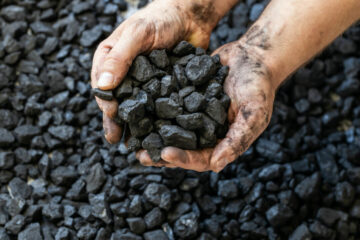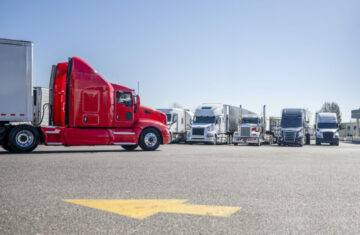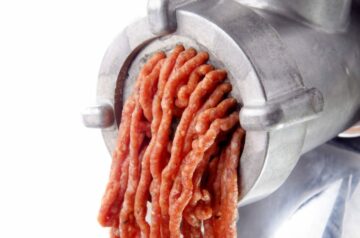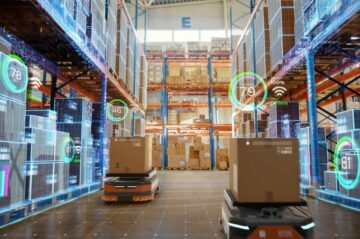
Shortages of critical products have become common across the globe in recent years. Now, in India, a combination of drought and monsoon rains are wreaking havoc, causing a debilitating shortfall in rice production and supply.
While rice farming is mainly rain-fed in India, the world’s leading rice exporter, excessive rain can flood the fields. Due to major weather events spurred by climate change, farmers in India have seen their output significantly reduced, which led to a ban on exports of non-basmati rice by the Indian government earlier this year. To make matters worse, global consumers, fearing a lack of access, are stock-piling rice, depleting current stocks and driving prices even higher.
As commodity shortages continue to affect consumers on a global scale, it’s high time that business and supply chain leaders move past considering how we got here, and take action to minimize, mitigate and prevent additional shortages.
Climate change is increasing the frequency and severity of extreme weather events and, as a result, natural disasters are on the rise. Over the past five years, the U.S. alone has experienced an average of $18 billion of climate disasters each year.
These disasters are impacting more than just rice, they extend to other critical crops like sugar and soy. And with early rumblings that India will ban exports of sugar for the first time in seven years, following a low-yield cane sugar season due to a lack of rain, the shortages will only worsen. For example, Brazil, a major producer of arabica coffee beans, has been hit with extreme droughts, causing lower crop yields. This in turn forces major retailers to switch to robusta beans as the cheaper option.
Herein also lies a unique challenge with the food supply chain: Many of the items have a predetermined shelf life. Part of creating a resilient supply chain is ensuring a balance between “just-in case” and “just-in-time” resources. But with perishable goods, businesses have less optionality to stockpile because their supply automatically loses value over time. As a result, it becomes more critical for businesses to evaluate how they go about supply chain planning.
With climate change presenting new challenges, businesses must innovate to tackle these threats. Seed products are considering a variety of tactics to better navigate these challenges, such as developing gene technology to produce seeds and crops that can withstand adverse weather events. Additionally, they’re building solutions that support regenerative agriculture techniques to reduce erosion, as well as deploying drone and GPS-based monitoring for crops, weather and pests. While these tools are innovative and necessary responses to climate change and weather issues, they’re highly capital-intensive, and unable to solve unpredictable weather events.
Building resilience in supply chain models and operations is critical. To navigate the complex logistics system of the supply chain, businesses should invest in supply chain design informed by digital twin technology. This creates a virtual replica of a physical supply chain, allowing companies to test scenarios and understand how disruptions will impact their business.
By drawing on regional rainfall data, for example, a digital twin can create a scenario for future flooding risks in key food-producing regions. With this technology, supply chain leaders can proactively identify single-source supplies or warehouses, and create optionality and diversity among their suppliers. That, in turn, helps mitigate disruptions caused by climate change.
No matter how many scenarios are played out via digital twins, adverse weather can affect every one of a business’s suppliers, making it critical to quickly find new partners for weathering the storm. Supply chain and procurement teams should work together to cultivate relationships with new suppliers around the world, distribute the risk. In such situations, sourcing technology can help. The best solutions maximize scarce sourcing resources by providing supplier insights and scenario analysis, thus allowing for collaborative decision-making.
We will continue to feel the impact of climate change across the global supply chain, and leaders must rise to the challenge before it’s too late. With monsoon season on the horizon, businesses need to act now if they want to digitize their supply chain in time. In order to meet these challenges head-on, leaders must collaborate with their suppliers, create effective innovations, and commit to digital transformation to problem-solve on behalf of the global consumer.
Nari Viswanathan is senior director of supply chain strategy at Coupa.
- SEO Powered Content & PR Distribution. Get Amplified Today.
- PlatoData.Network Vertical Generative Ai. Empower Yourself. Access Here.
- PlatoAiStream. Web3 Intelligence. Knowledge Amplified. Access Here.
- PlatoESG. Carbon, CleanTech, Energy, Environment, Solar, Waste Management. Access Here.
- PlatoHealth. Biotech and Clinical Trials Intelligence. Access Here.
- Source: https://www.supplychainbrain.com/blogs/1-think-tank/post/38277-the-food-supply-chains-secret-sauce-for-fighting-climate-change
- :has
- :is
- a
- About
- access
- across
- Act
- Action
- Additional
- Additionally
- adverse
- affect
- agriculture
- Allowing
- alone
- also
- among
- an
- analysis
- and
- ARE
- around
- AS
- automatically
- average
- Balance
- Ban
- because
- become
- becomes
- been
- before
- behalf
- BEST
- Better
- between
- Brazil
- Building
- business
- businesses
- but
- by
- CAN
- caused
- causing
- chain
- challenge
- challenges
- change
- cheaper
- Climate
- Climate change
- Coffee
- collaborate
- collaborative
- combination
- commit
- commodity
- Common
- Companies
- complex
- considering
- consumer
- Consumers
- continue
- create
- creates
- Creating
- critical
- crop
- crops
- Cultivate
- Current
- data
- Decision Making
- depleting
- deploying
- Design
- developing
- digital
- Digital Transformation
- digital twin
- Digital twins
- digitize
- Director
- disasters
- disruptions
- distribute
- Diversity
- drawing
- driving
- drone
- Drought
- due
- each
- Earlier
- Early
- Effective
- ensuring
- evaluate
- Even
- events
- Every
- example
- experienced
- exports
- extend
- extreme
- farmers
- farming
- feel
- Fields
- fighting
- Find
- First
- first time
- five
- flood
- following
- food
- food supply
- food supply chain
- For
- Forces
- Frequency
- future
- Global
- global scale
- globe
- Go
- goods
- got
- Government
- Have
- help
- helps
- here
- High
- higher
- highly
- Hit
- horizon
- How
- HTTPS
- identify
- if
- Impact
- impacting
- in
- increasing
- india
- Indian
- indian government
- informed
- innovate
- innovations
- innovative
- insights
- Invest
- issues
- IT
- items
- jpg
- just
- Key
- Lack
- Late
- leaders
- leading
- Led
- less
- lies
- Life
- like
- logistics
- Loses
- lower
- mainly
- major
- make
- Making
- many
- Matter
- Matters
- Maximize
- Meet
- minimize
- Mitigate
- models
- monitoring
- more
- move
- must
- Natural
- Navigate
- necessary
- Need
- New
- now
- of
- on
- ONE
- only
- Operations
- Option
- or
- order
- Other
- out
- output
- over
- part
- partners
- past
- physical
- planning
- plato
- Plato Data Intelligence
- PlatoData
- played
- prevent
- Prices
- procurement
- produce
- producer
- Production
- Products
- providing
- quickly
- RAIN
- recent
- reduce
- Reduced
- regenerative
- Regenerative Agriculture
- regional
- regions
- Relationships
- replica
- resilience
- resilient
- Resources
- responses
- result
- retailers
- Rice
- Rise
- Risk
- risks
- s
- Scale
- Scarce
- scenario
- scenarios
- Season
- Secret
- seed
- seeds
- seen
- seven
- severity
- Shelf
- shortages
- shortfall
- should
- significantly
- situations
- Solutions
- SOLVE
- Sourcing
- Stocks
- Storm
- such
- sugar
- supplier
- suppliers
- supplies
- supply
- supply chain
- Supply Chain Planning
- support
- Switch
- system
- tackle
- tactics
- Take
- teams
- techniques
- Technology
- test
- than
- that
- The
- the world
- their
- These
- they
- this
- this year
- threats
- Thus
- time
- to
- together
- too
- tools
- Transformation
- TURN
- twin
- Twins
- u.s.
- unable
- understand
- unique
- unpredictable
- value
- variety
- via
- Virtual
- want
- we
- Weather
- WELL
- which
- while
- will
- with
- Work
- work together
- world
- worse
- worsen
- year
- years
- yields
- zephyrnet












